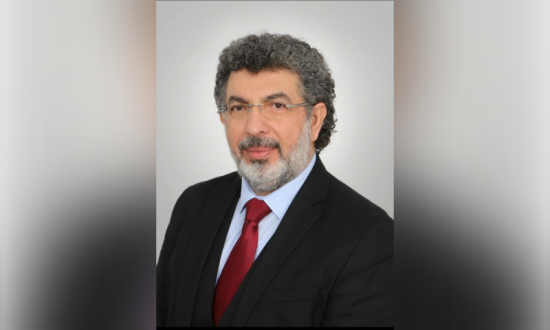Dr. Olgun’s career trajectory began after completing my postgraduate studies at the University of Surrey in the UK. Subsequently, he commenced his journey at Dokuz Eylül University, Faculty of Business Administration in 1992. Upon completing my PhD at the same university in 1998. In 2001, he embarked on an international journey, dedicating 22 years to working in public and private universities across diverse locations such as North Cyprus, Dubai, Singapore, Switzerland, Turkey, the UK, Kyrgyzstan, and the USA. Throughout this period, he assumed multifaceted roles, ranging from Head of Department to Vice-Rector. Presently, Dr. Olgun’s contributions extend to several prestigious roles within the global educational landscape. He serves as an elected Board Member of INQAAHE (International Network for Quality Assurance Agencies in Higher Education) and holds leadership positions as Past-Vice President of CEENQA (Central and Eastern European Network of Quality Assurance Agencies in Higher Education) and Vice President of IQA (Association of Quality Assurance Agencies of the Islamic World). Additionally, he has been recognized for his expertise by being elected as a member of the CHEA-CIQG (Council for Higher Education Accreditation America) International Advisory Council in the USA since 2022. Dr. Olgun has held the position of Accreditation Committee member at the British Accreditation Council (BAC) and also International Advisor – THEQC, Türkiye.
Introduction: The Nexus of Global Education
As an international expert for the last 32 years, I have been experiencing the higher education ecosystem worldwide. In the dynamic and interconnected landscape of global education, a paradigm shift is occurring with the emergence of a comprehensive model I would name “A Triangle Formula in Higher Education Excellence”. This approach integrates Quality Assurance (QA), Accreditation, and Rankings, forming a robust foundation for ensuring excellence in international higher education.
Internationalization strategy, high level of competition, as well as collaboration among HEIs, lead to regional and global excellence in academia. As far as accreditation and ranking are concerned, there should also be an alignment to complement the services and achieve excellence.
Let’s explore the vertices of this transformative triangle and understand how it shapes the future of higher education globally.
A Triangle of Quality Assurance & Accreditation & Ranking: A Systematic Pursuit of Excellence
Quality assurance in higher education involves a systematic approach to monitoring and evaluating academic programs and institutions. This ongoing process is essential for fostering continuous improvement and maintaining the credibility of educational institutions on a global scale.
One of the key components of quality assurance is accreditation, a voluntary process through which institutions undergo a comprehensive review. Accrediting bodies, whether regional or international, play a crucial role in promoting accountability and transparency in the education sector.
International accreditation stands as a testament to an institution’s commitment to providing high-quality education aligned with global standards. Accrediting bodies evaluate various factors, including curriculum, faculty qualifications, facilities, and student support services. Achieving accreditation signifies dedication to continuous improvement and adherence to rigorous quality benchmarks.
Accreditation not only enhances the credibility of degrees but also contributes to the global mobility of students and professionals. Students can trust that their education meets international standards, and employers can have confidence in the skills and knowledge graduates bring to the workforce.
While accreditation ensures institutional quality, rankings offer a comparative perspective on the performance of universities and colleges worldwide. Organizations publish annual rankings, evaluating institutions based on criteria such as academic reputation, faculty quality, research output, and international diversity.
While rankings provide valuable insights into an institution’s strengths, they also spark debates about the methodologies employed. Critics argue that rankings often oversimplify the complexities of educational institutions and may not accurately reflect their diverse missions and strengths.
Navigating the Educational Landscape
Ensuring quality in higher education on an international scale comes with its challenges. One significant hurdle is the diversity of education systems and cultural contexts. Standardizing evaluation criteria that accommodate this diversity while maintaining high benchmarks is a delicate balancing act.
The dynamic nature of education poses another challenge. As the landscape evolves with technological advancements, changing societal needs, and new pedagogical approaches, quality assurance mechanisms must adapt to ensure relevance and effectiveness.
Striking a Balance: The Key to Sustainable Excellence
To address these challenges, a balanced approach is crucial. Accreditation bodies need to foster flexibility in their evaluation processes, allowing for innovation while upholding core quality standards. Additionally, collaboration between institutions, accrediting bodies, and governments can facilitate the sharing of best practices and promote continuous improvement.
It’s essential to recognize that quality assurance is not solely the responsibility of accrediting bodies. Institutions themselves play a pivotal role by fostering a culture of quality, investing in professional development for faculty, and regularly reviewing and updating their programs to meet evolving educational needs.
The Way Forward: Nurturing a Global Educational Ecosystem
As the landscape of higher education continues to evolve, the role of quality assurance, accreditation, and rankings remains pivotal. Institutions and accrediting bodies must work collaboratively to strike a balance between maintaining standards and fostering innovation.
International collaboration is key to developing a shared understanding of quality and ensuring that educational credentials are globally recognized. Through a concerted effort, the international higher education community can create a landscape where students can trust the quality of their education, institutions can continually improve, and rankings provide meaningful insights without oversimplifying the richness of diverse educational experiences.
In conclusion, the Triangle Formula emerges as a transformative model, weaving together the threads of Quality Assurance, Accreditation, and Rankings. There has to be a collaborative approach in aligning the components of excellence initiatives for the higher education ecosystem. As institutions embrace this comprehensive approach, they pave the way for a future where education transcends borders, excellence knows no limits, and the global academic community thrives in unity. The Triangle Formula stands as a testament to the commitment of the international higher education community to shaping a brighter and more interconnected future for learners worldwide. The next step will be to formulise the inter-connectivity of the pillars and recommend future practices and implications.




